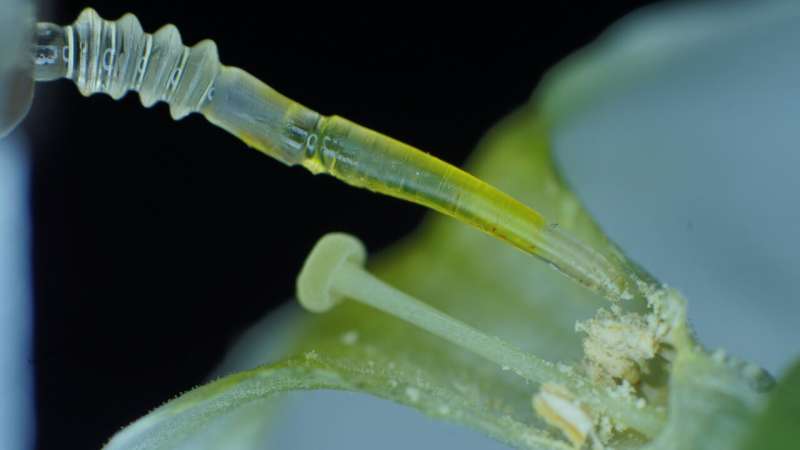This article has been reviewed according to Science X's editorial process and policies. Editors have highlighted the following attributes while ensuring the content's credibility:
fact-checked
peer-reviewed publication
proofread
Scientists develop a soft robot that mimics a spider's leg

Researchers Indrek Must and Kadri-Ann Valdur of the Institute of Technology of the University of Tartu have created a robot leg modeled after the leg of a cucumber spider. The soft robot created in cooperation with the Italian Institute of Technology could, in the future, move where humans cannot.
In organisms, fluid is what binds the organs, the blood vessels and the musculoskeletal system as a whole. For example, hemolymph, a blood-like fluid in a spider's body, enables muscle activation and exoskeleton flexibility. It was the cucumber spider inhabiting Estonia that inspired scientists to create a complex soft robot, where soft and rigid parts are made to work together and are connected by a liquid.
According to Indrek Must, Associate Professor of Soft Robotics, the designed soft robot is based on real reason. "Broadly speaking, our goal is to build systems from both natural and artificial materials that are as effective as in wildlife. The robotic leg could touch delicate objects and move in the same complex environments as a living spider," he explains.
In a research paper published in the journal Advanced Functional Materials, the researchers show how a robotic foot touches a primrose stamen, spider web, and pollen grain. This demonstrates the soft robot's ability to interact with very small and delicate structures without damaging them.
The manufactured leg is the size of a little fingernail and consists of a light-curing resin exoskeleton and an artificial muscle made of polypyrrole. Similar to a natural muscle, a soft robot is activated by an electrical signal. The entire exoskeleton contains an electrolyte solution that surrounds both a stiffer tendon made of resin and an electroactive polymer artificial muscle.
The solution behaves like the hemolymph in spiders and affects the properties of the exoskeleton as well as the movement—the liquid makes the exoskeleton more flexible and the leg starts to move due to the change in the shape of the polymer.
Soft robotics is inspired by wildlife. In the future, robots will be able to operate in places where humans cannot or cannot go, for example moving inside a person as a nanorobot during surgery or searching for survivors in a disaster area.
More information: Kadri‐Ann Valdur et al, A Spider Leg‐Inspired mm‐Scale Soft Exoskeleton Enabled by Liquid via Hydration and Charge Transport, Advanced Functional Materials (2024). DOI: 10.1002/adfm.202315161


















